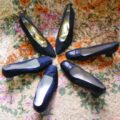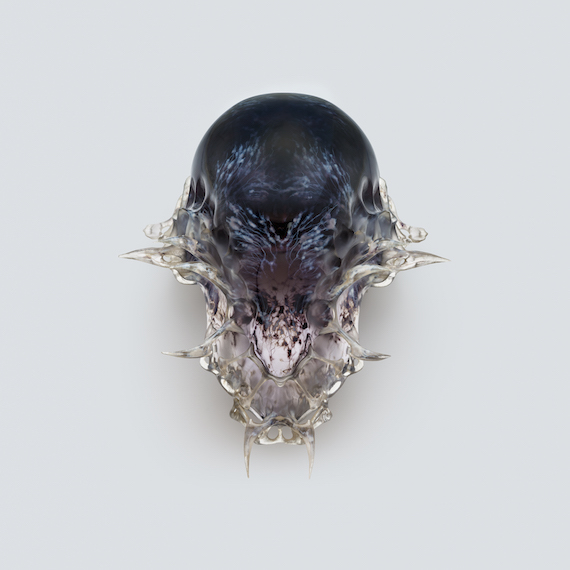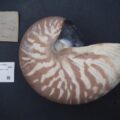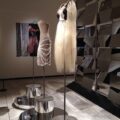British Museum – Life and Sole
March 10, 2016If you’re visiting the British Museum, this small exhibition inside the Islamic World section is well worth having a look at. The British Museum is also showing an interesting exhibition called Krishna in the Garden of Assam – the cultural context of an Indian textile. And finally, if that’s not enough fashion-related gems to gladden the heart, you must finish your trip by going immediately to Room 2a, where the Waddesdon Bequest in all its shining glory awaits. The Renaissance jewellery collected by the Rothschilds (and the Victorian fakes they picked up along the way) will satisfy anyone with a magpie eye for statement baubles.
Footwear from the Islamic World
Krishna in the Garden of Assam – the cultural context of an Indian textile
The Waddesdon Bequest
Life and Sole at the British Museum
Firstly, though my knowledge about the subject is limited, I’m a bit puzzled by the footwear’s designation as Islamic. The regions shown on the wall map are fairly far-flung and diverse, including North Africa, the Middle East, Turkey, Central Asia and South Asia and though they are all, of course, places where the Islamic religion is dominant, the footwear itself isn’t religious. It’s not meant for use in a religious ceremony (with the exception of wedding apparel) and it doesn’t contain religious texts or inscriptions.
There is not a lot of space to explore the cultural context of shoes from each region, or even present a chronological or perhaps class or caste(?) based display – for example, there were some very interesting shepherd’s boots and other peasant footwear, including some painful-looking rough straw sandals, all from different countries and different time periods and in different cases. Then there were some extremely expensive gold threaded slippers, worn by royalty as attendant paintings proved, side by side with decorated appliquéd boots, worn in a different time and place and not by royalty. The footwear is from 1800 onwards, so that’s a lot of cultures and a long time to represent in about 25 pairs of shoes, slippers, sandals, clogs and boots!
Must have footwear at the British Museum
Perhaps it was better to try and divorce the cultural context and view it as an aesthetic display. To this end: I MUST have a pair of those crazy Turkish women’s boots which were covered in appliqué, have a turned up toe which finished in a kind of trailing cord, brass buttons, a little tassel and an iron spike on the heel to keep them on the stirrup whist horse riding. They were kind of a mixture of American Wild West cowboy boots, the most outrageous of which feature gorgeous appliqué and embroidery, English Victorian button boots for the buttons and scalloped button holes, and traditional Turkish slippers for the turned up sole.
Overall I somehow pictured they’d be ideal for the Mexican painter Frieda Kahlo. I think the exhibition is worth seeing just for them, and go see them you must if you can’t imagine them because photography was prohibited so I can’t show you an image.Other shoes which were notable and unusual included some loafers from Pakistan from the early part of the 19th century. Densely embroidered with gold, the technique is Eastern but the shape Western. The result is very elegant.
There are also some excellent bath-house clogs from Turkey (1800-1850), inlaid with mother of pearl. Meant to elevate the wearer from the filth of the floor (I thought bath-houses were intrinsically clean? I’ll have to revise my assumptions) these stilts are extremely tall, so tall that the wearer would have required assistance from an attendant. The poor attendant would, I suppose, have to trudge through the dirt herself. Unless, I suppose, she was wearing platforms too and then they would both support each other, perhaps teetering and swaying like a pair of best friends in stilettos late on a Friday night.
There are also some very sweet children’s shoes and boots, and embroidered bridal shoes from different regions, a pair of which from Libya has the protective “Hand of Fatima” sign cunningly cut into its tongue.
Chimera at the British Museum
I think this is a good show for footwear designers to get inspiration from. And while you’re there, don’t miss the Iranian harpy in an adjacent case. She’s a bird with a woman’s head – a bald woman’s head – and she’s made from steel. I know that this is random, but that harpy really struck me. Most chimeras are kind of good looking – you know like Egyptian sphinxes, or centaurs – ok the Minotaur wasn’t that hot, but have you ever come across those strangely stately Victorian lady ones – there’s some splendidly impassive ones on the benches on Chelsea Embankment if you’re ever passing that way.
So anyway, this harpy is not one of your handsome harpies, but she’s striking. And on another, totally-un-fashion-related-but-chimera-related-note, the saddest chimera of all is the wizened “mermaid” in room 1. She’s stitched together from a mummified monkey jaw, some papier mache and a fish tail, an 18th century fiction purporting to be a real beast caught in Japanese waters for the delighted murmurs of European drawing rooms.
And so we come to:
The Waddesdon Bequest at the British Museum
Talking of collectors, and talking of fakes, and of drawing rooms, the Rothschilds had a lovely drawing room with a sparkling collection of fakes. Literally, sparkling. I’m sorry, I shouldn’t be so gleeful that they picked up some duds in a very fine assembly of Renaissance art, craftsmanship and curios. It’s just strange to think that objects made, sometimes, for churches and things like Nicholas Hilliard miniatures of royalty should end up on someone’s mantlepiece like a china shepherdess – but of course, that’s not where they ended up, they ended up at the fine institution of the British Museum where they probably belong.
And honestly, these duds are worth having. Looking specifically at the jewellery, because if you looked at all of the collection in one go your eyes would probably fall out from the splendour, the displays focus on the very over-the-top style of jewellery that was fashionable in the period, where such a lot of skill from different workmen was combined and the owner of the piece wanted you to know how expensive this bauble was.
The pieces are encrusted with different gems – usually rubies, diamonds, emeralds and baroque pearls (natural pearls that are unevenly shaped and not spherical). The cut of the gem is not the more popular types seen in the present day but usually a table cut, which gives each gem a flat surface, or a cabochon, with a gently rounded surface and it is held in place, not delicately by claws but with rub over settings, where narrow borders securely hold the gem in place like a picture frame.
The setting of these stones is gold – what, do you think they’d use silver? And platinum was not in use then. This type of setting and cut gives the pieces makes the gems look a little uneven sometimes in a way that emphasises, not belies, the massive skill that went into setting them and gives them their distinctively medieval look. At the time, diamonds were not cut for light to shine through and give sparkle – in fact diamonds, once set, often appeared black.
Amazing jewellery at the British Museum
British Museum – Life and Sole -gems and precious metals
On top of the raw cost of gems and precious metals, there is the amount of work that goes into each – before the gems are set the enameller would have added colour to the gold, and before that the shape of the piece was cast. The fashion at the time was for complex pieces that could tell a story – usually a bible scene – and some looked like a miniature stage set – a tiny sculpture in precious metal. (A tiny sculpture, but a large piece of jewellery to put around your neck!) The details of these were often exquisite.
At the same time, more humorous or whimsical but equally complex pieces were in fashion. Often the makers focussed on the setting for an especially large gem or pearl. Waddesdon Bequest is especially famed for two pieces where the designer has made the most of the natural material. One is a stunning turquoise green emerald, which is set into a seahorse with a tiny Native American rider – fantastical and fantastic. And one is a baroque pearl, shaped vaguely like the torso of a man, which has been made into a merman who drips with jewels. There are sheep, their boucle wool represented by studs of pearls, donkeys with pearl bodies, and enamelled parrots sit in cages, while other, less recognisable sea creatures writhe or are ridden.
Other themes are monograms or initials, which is where the Nicholas Hilliard miniature comes in. The “Lyte Jewel” is not a single gem at all but an enamelled gold locket. The outside of the case is a fine fretwork of diamonds set in in “R” shape, the royal monogram of James VI of Scotland and James I of England. Inside is his portrait on vellum by Hilliard.
The Waddesdon Bequest is displayed in a new, carefully designed room in the British Museum with well placed discreet lighting, lending an intimacy which is designed to recall an air of the original drawing room where the entire wunderkammer was first housed.










